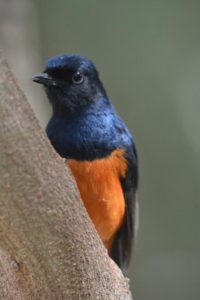News Release: Media Contact: Erica Stewart, senior manager, public affairs 202.207.6795, estewart@savingplaces.org
Release has been sent to: American Press Travel News–Washington (May 30, 2019) – The National Trust for Historic Preservation today announced that Nashville’s Music Row was named to its 2019 list of America’s 11 Most Endangered Historic Places, an annual list that spotlights important examples of our nation’s architectural and cultural heritage that are at risk of destruction or irreparable damage.
National organization sounds alarm; calls for revisions to Music Row Vision Plan and city support for preservation tools to preserve and protect epicenter of American musical heritage
Despite its critical role in the identity, economy, and culture of the city and Nashville’s international reputation as Music City for more than 60 years, vital pieces of Music Row’s historic fabric are being lost to growing pressure from Nashville’s rapid pace of development, most famously—but certainly not only—evidenced by the narrowly avoided demolition of RCA Studio A. By naming Music Row to its 11 Most Endangered list, the National Trust is signaling its grave concern over the rampant non-music industry related development on Music Row in recent years and the urgent need for city lawmakers to preserve and protect this epicenter of American musical heritage.
“Music Row is exactly the kind of cultural district that many other cities have been trying to create,” said Katherine Malone-France, interim chief preservation officer of the National Trust for Historic Preservation. “The sweeping arc of the past and present of the music industry can be felt in Nashville’s modest late-19th century bungalows and small-scale commercial buildings that have inspired and incubated the creation of music for generations. If demolitions and zoning exemptions continue, this one-of-a-kind musical ecosystem will be lost forever.”
Studies and surveys by the National Trust and Metro Nashville’s Planning Department have repeatedly affirmed the community’s strong desire to preserve the historic character of Music Row, yet demolition activity has continued unabated. Since 2013, there have been 50 demolitions on Music Row—many of which have pushed out small, independently owned music businesses within low-rise historic buildings—to make room for new high-rise luxury apartments and offices that have no provisions or set-asides to serve the music industry. The majority of these demolitions (64 percent) were for new development permitted by Specific Plan (SP) rezonings.
“This designation is the happiest we’ve ever been receiving bad news,” said Elizabeth Elkins, vice president of the board of Historic Nashville, Inc. “We are glad that the rapid rate of destruction of Music Row will now be in the national spotlight, as the zoning and ongoing demolitions strike at the heart of our greatest fear, which is the unabated loss of the compelling spaces that are the backbone of what makes Music City both an internationally-known destination and a unique place to live and work.”
The Metro Planning Department recently released its draft Music Row Vision Plan and is accepting public comment on the plan until June 3. Metro Nashville will hold elections August 1 for mayor and members of Metro Council, making this a critical opportunity for citizens and fans of Music Row nationwide to voice their support for ensuring the community and character that makes Music Row a one-of-a-kind cultural district endures for generations.
The National Trust and its partner Historic Nashville, Inc. urge the public to join them in asking the Metro Planning Department and Metro Nashville’s elected officials to make key changes to the draft Music Row Vision Plan and to enact the creation of new preservation tools including:
Discontinue Specific Plan exemptions that ultimately encourage demolitions;
Eliminate recommendations for increased building height allowances anywhere in the Music Row area;
Designate Music Row as a Cultural Industry District in recognition of its unique role in Nashville’s economy and its worldwide significance
Provide support to create a non-profit entity to promote and preserve Music Row that would manage a revolving fund to preserve significant properties for use by music businesses; provide financial options (such as low or no-interest loans) to music businesses for expansion, rehabilitation, retention, and innovation, and promote Music Row to attract new music businesses.
“With the loss of so many historic resources since Music Row’s designation as a National Treasure in 2015, it’s critical that the city coalesces plans to protect this neighborhood—which is internationally renowned for its contribution to music culture—and keeps it viable for the creative class that built our music industry,” said Tim Walker, executive director of the Metro Nashville Historical Commission.
The National Trust’s national audience will be encouraged to sign a letter to Nashville lawmakers urging their careful stewardship of a vital piece of American musical heritage. Learn more at: savingplaces.org/endangeredmusicrow.
The other endangered historic places named to the 2019 may be found here: www.SavingPlaces.org/11Most.
Media Availability:
Representatives from Historic Nashville, Inc., Metro Nashville Historical Commission, and the National Trust for Historic Preservation will be available to talk to the media about the 11 Most Endangered listing and to discuss recommendations to ensure Music Row’s future as the center of Nashville’s music industry.
May 30, 2019, 9:30 – 12:00 p.m.
PLA Media
1303 16th Avenue South
Nashville, TN 37212
Food and drink will be available
Please RSVP to Pam Lewis at info@plamedia.com
###
About the National Trust for Historic Preservation
The National Trust for Historic Preservation is a privately funded nonprofit organization that works to save America’s historic places. Visit http://www.savingplaces.org.
About the Music Row National Treasure
Nashville’s Music Row has had a profound influence on the growth and evolution of American music, shaping many genres of music and launching the careers of some of the biggest names in the business over the last 60 years. In January, 2015 the National Trust named Music Row a National Treasure—a designation made in recognition of Music Row’s importance to Nashville’s identity as Music City and to America’s cultural heritage as well as concern for its future in light of recent intense development pressure and demolition activity.
About the 11 Most Endangered Historic Places List
America’s 11 Most Endangered Historic Places has identified over 300 threatened one-of-a-kind historic treasures since 1988. Whether these sites are urban districts or rural landscapes, Native American landmarks or 20th-century sports arenas, entire communities or single buildings, the list spotlights historic places across America that are threatened by neglect, insufficient funds, inappropriate development, or insensitive public policy. The designation has been a powerful tool for raising awareness and rallying resources to save endangered sites from every region of the country. At times, that attention has garnered public support to quickly rescue a treasured landmark; while in other instances, it has been the impetus of a long battle to save an important piece of our history. www.SavingPlaces.org/11Most.
Share this email:




